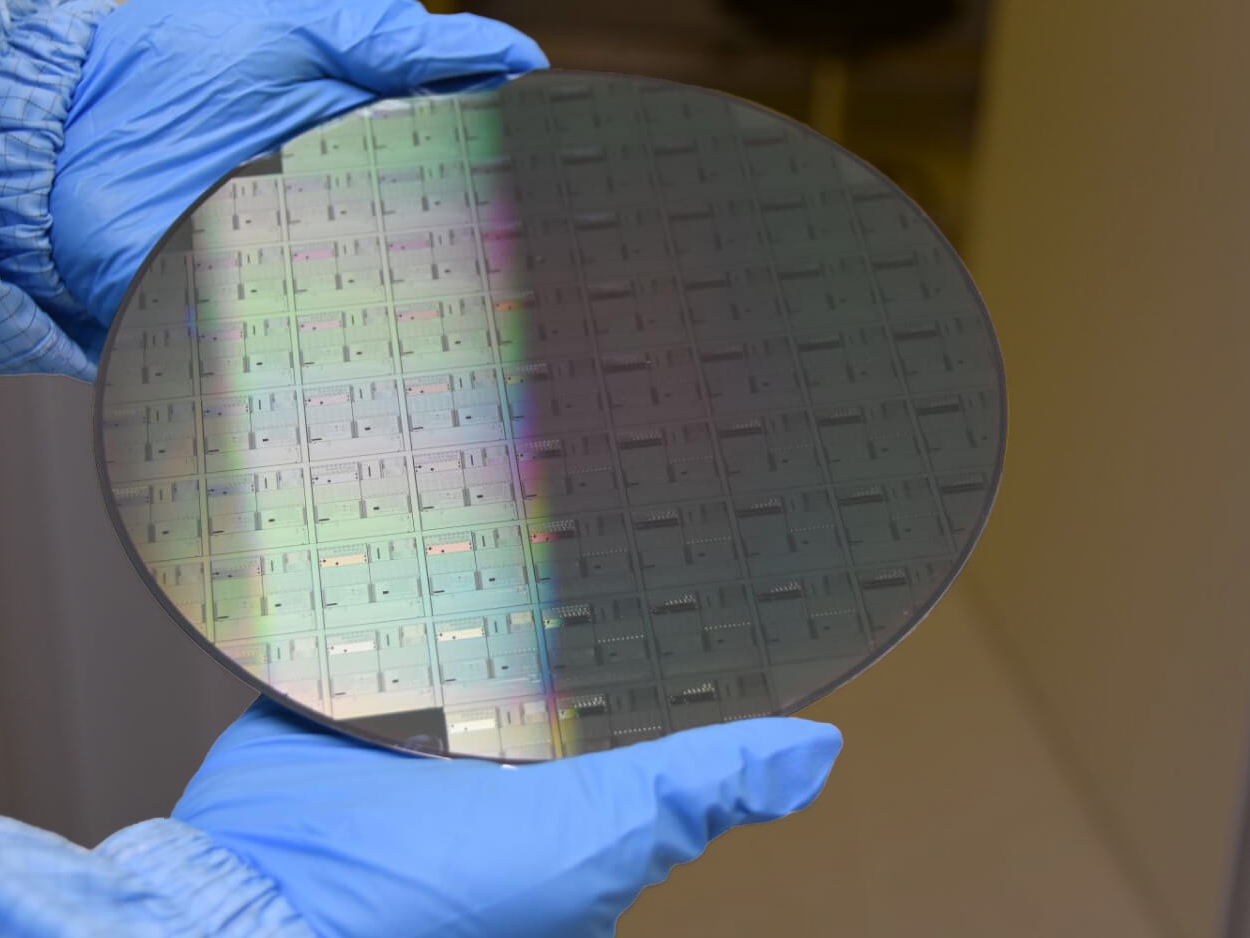TFLN integrates the high-speed capabilities of lithium niobate modulator technology with the scalability inherent in silicon photonics technology. Our Mach-Zehnder modulators (MZM) establish pioneering benchmarks within the industry.
Our solution involves the heterogeneous integration of a TFLN modulator atop any standard silicon photonics chip. This integration seamlessly blends the unique strengths of silicon photonics technology with the benefits of high-speed modulator technology using Lithium Niobate.

Technology details
- High Bandwidth: Our technology achieves electro-optical modulation bandwidths surpassing 70GHz across our product range. This paves the way for the realization of 200Gbps per lane modulators in various configurations.
- Minimal Optical Loss: Our TFLN manufacturing process seamlessly integrates with low-loss SiN substrates. The insertion loss for the modulator including coupling can be as low as 3dB. Our concept of combining the modulator with an external CW laser raises the power efficiency even higher.
- Low Voltage Drive: Through extensive R&D efforts, we have significantly lowered the drive level demands for the modulator. Presently, we achieve remarkable modulation efficiencies of 2 V·cm and a Vp below 2V for 200Gbps modulation.
- Linearity: Operating our MZM modulators near a linear operating point results in a less distorted O/E conversion compared to competing technologies. Any process or drift variations can be readily compensated using active compensation techniques.
- Cost: Our TFLN technology builds upon mainstream CMOS processes, so the cost is low albeit the slightly bigger physical dimensions.
| TFLN MZM | EML | Silicon Photonics | |
|---|---|---|---|
| Bandwidth >50GHz | Possible | Possible | Material Limitations |
| Optical Insertion Loss | Low | Low | Acceptable |
| Drive voltage Component cost of EML | High | High | High |
| Linearity | High | Good | Good |
| Component Cost | Good (CMOS) | Acceptable (InP) | Lowest cost(CMOS) |
| Assembly Cost | Low | High | Lowest |
Products
More technologies
Heterogeneous Integration
OneTouch Technology has invested extensive research efforts into developing a reliable bonding process for Thin-film Lithium Niobate layers onto silicon on insulator materials such as Si, SiN, and SiO.
Optical Interconnects
As silicon photonic circuits continue to take steps towards an increased integration level, new challenges related to optical connectivity rise accordingly. The advent of AI creates a necessity for increased bandwidths between processors and memory, with optical interfaces that need high density and easy alignment.
800G TOSA Architecture
At OneTouch Technology we strongly believe that Silicon Photonics possesses the potential to increase its market share for different applications, even though some challenges remain. On the other hand, the market for optical transceivers continues to grow and therefore demands higher speeds.
Get in touch today
We’d love to hear from you! Whether you have a question, feedback, or need support, feel free to reach out.
